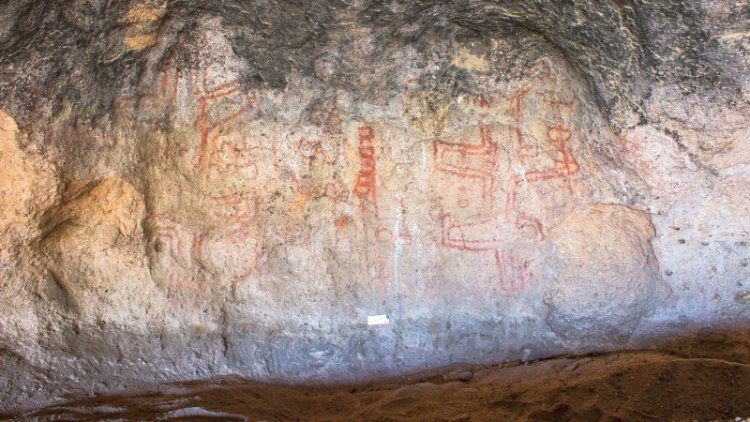These South American cave paintings reveal a surprisingly old tradition
Radiocarbon dates point to an artistic design practice that began in Patagonia almost 8,200 years ago, several millennia earlier than previously recorded.

Near the southernmost tip of South America, people may have started cave painting nearly 8,200 years ago, several millennia earlier than previously suggested by ancient rock art in that area.
Dating of comblike depictions in a cave in Argentina indicates that these designs belonged to a rock art tradition that lasted more than 3,000 years, ending around 5,100 years ago, researchers report February 14 in Science Advances. Ancient South Americans painted a variety of designs on the cave’s internal wall and part of its ceiling over roughly 130 generations, probably to preserve cultural knowledge shared by regional hunter-gatherer groups, archaeologist Guadalupe Romero Villanueva and colleagues say.
Prior studies suggested that extremely dry conditions kept South America sparsely populated during this period. Small, dispersed groups would have needed a central spot to preserve visually their ecological and ritual know-how, the investigators say.
Paint pigments used in the Argentinian cave designs provided the oldest direct dates for rock art in the Americas, Romero Villanueva says. For comparison, indirect measures of mineral growths that formed over and underneath an Indonesian cave depiction suggest it’s the oldest known rock art anywhere, dating to at least 45,500 years ago (SN: 1/13/21).
The Argentinian cave, known as Cueva Huenul 1, lies about 1,000 meters above sea level in a desert region of northwestern Patagonia. Its internal wall and part of its ceiling display 895 painted designs, including geometric shapes, cross-shaped lines and figures of humans and llama relatives known as guanacos.
Romero Villanueva, of the National Scientific and Technical Research Council in Buenos Aires, and colleagues radiocarbon-dated minuscule chips from four cave paintings of similar, comblike designs. Three paintings yielded reliable age estimates.
Dating of material excavated inside the cave, including guanaco bones bearing butchery marks, indicate that people first reached the site as early as around 11,700 years ago. The scientists say that no signs of hunting or other daily activities appear in the cave when rock art was produced there, underscoring the cave’s transition from a general-purpose site to a special place for keeping cultural knowledge alive via painted images.
What's Your Reaction?




















